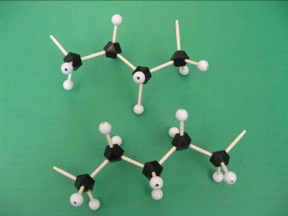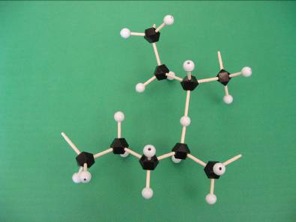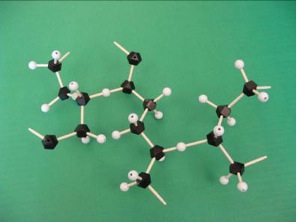Polymer Network Structure Activities
For elementary school children, the chains of students are formed as described previously. Next, have two or three people connect the chains to "cross-link" the polymer. This can be done by having one student hold on to the shoulders of students on two different chains. Again have students consider how "free" they are in this position. This cross-linked structure is called a polymer network and the molecules in the network are not as free as those in the chain--their movement is much more constrained.
For middle school children, have the students prepare paper clip chains are described previously. They can use pipe cleaners to connect the paper clip chains and form the two dimensional network. Paper circle chains can be cross linked using additional paper circles or wire. The chains can also be connected in a 3-D configuration. Have the students note that the mobility of the chain is much different in the network form as compared to the single chain form. If you used the paper chain model, which can then be cross-linked with either more paper circles or wire. Have students observe how constrained the paper clips (or paper circles) are, when part of a network.

With high school students, have them form the three dimensional chain structures with gum drops and toothpicks, or a molecular set, as illustrated previously. Have them create at least two separate 'chains' as shown below.

They can now connect the chains together to begin to form the polymer network in three dimensions. Depending on how many 'atoms' and 'bonds' are available, the students can create a fairly large polymer network.

